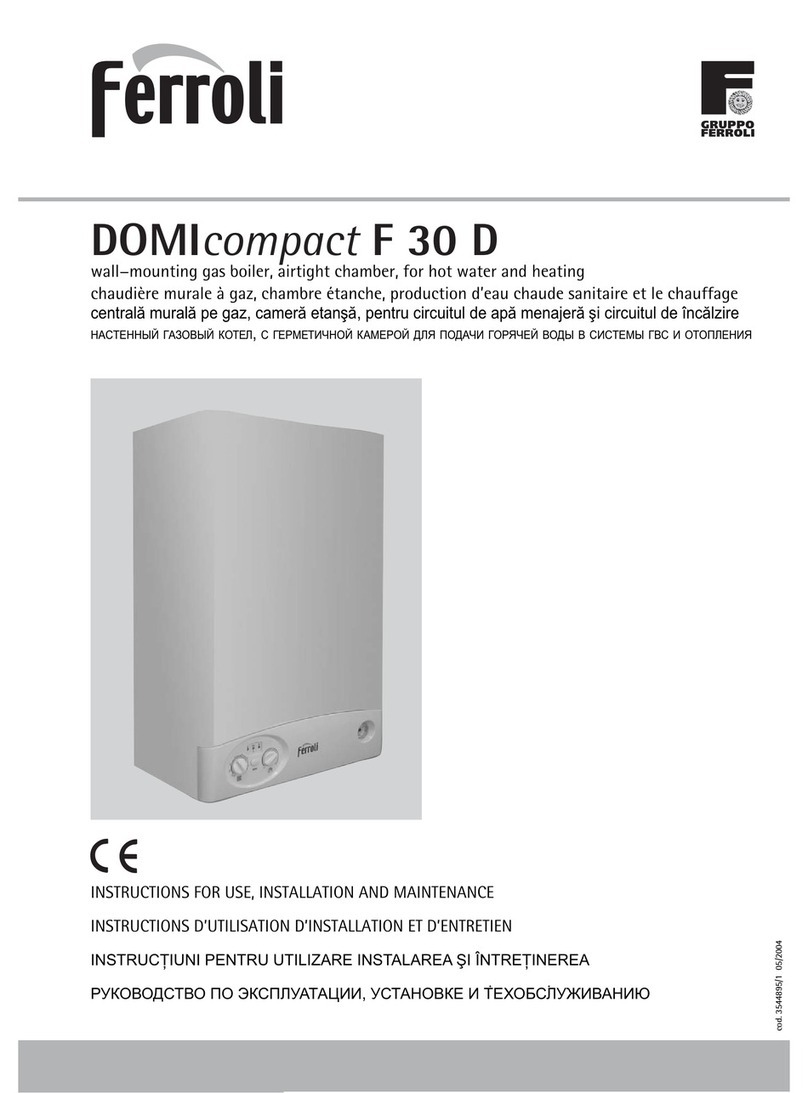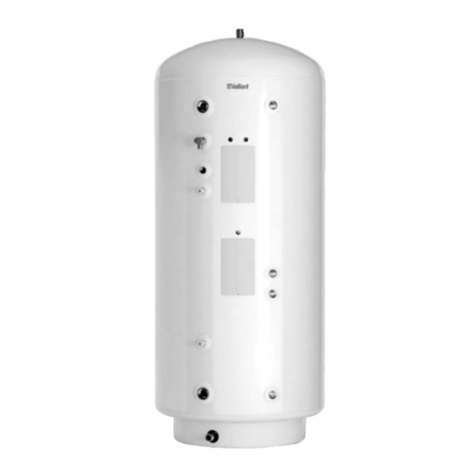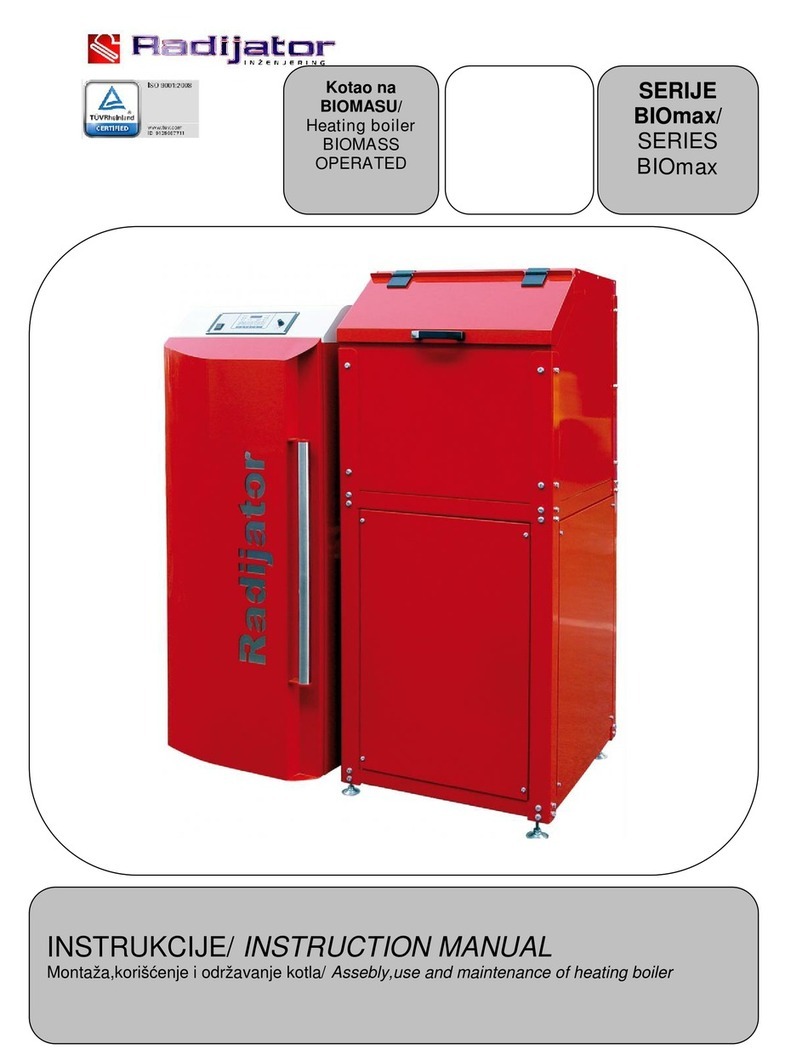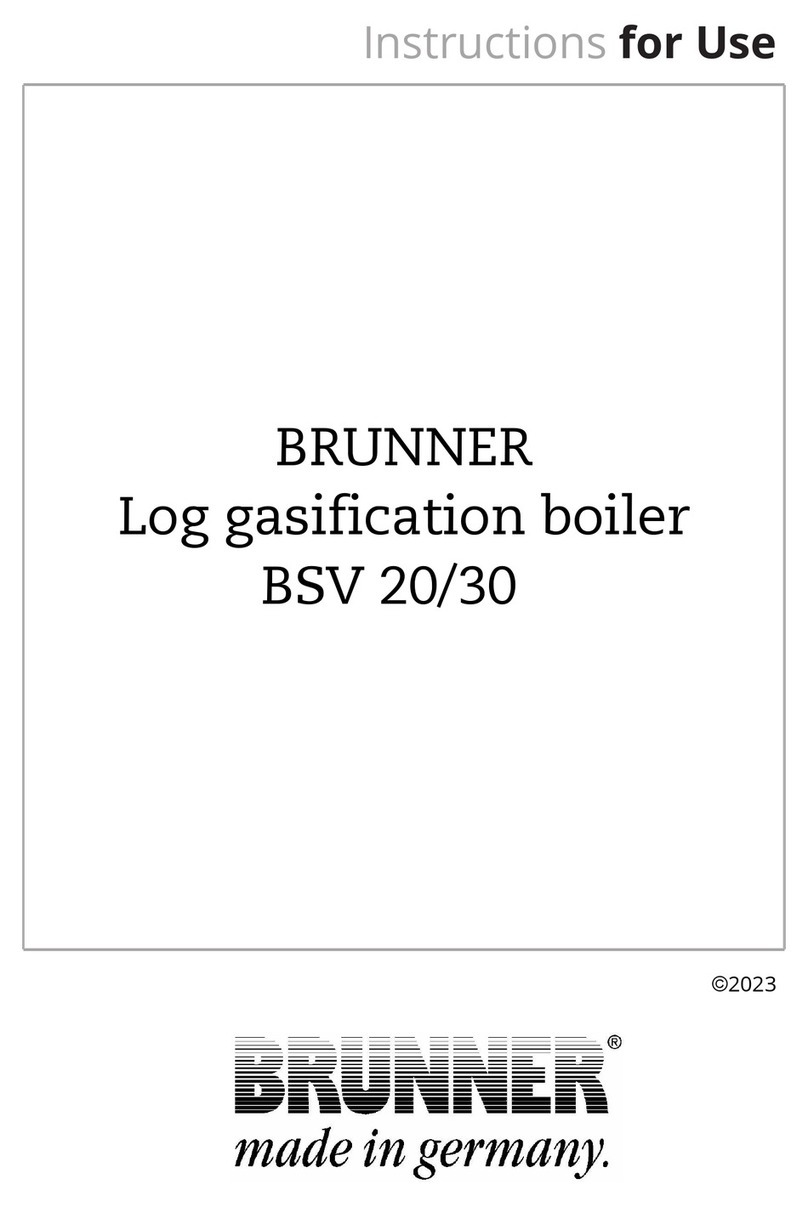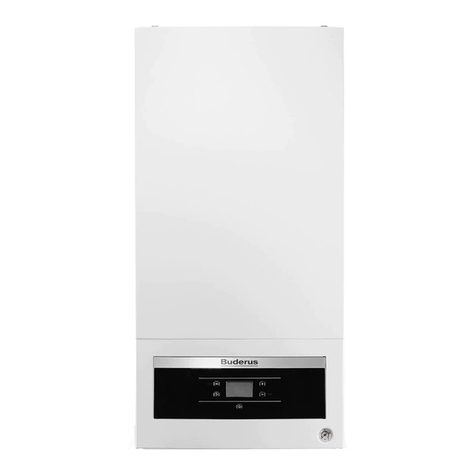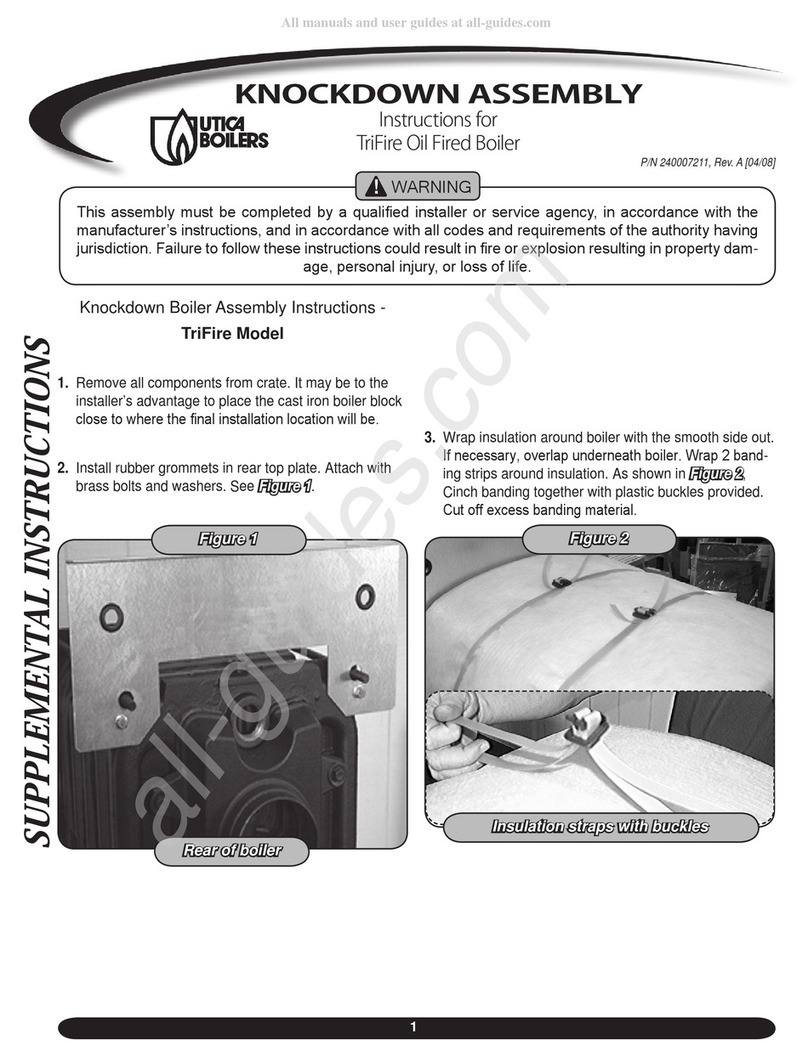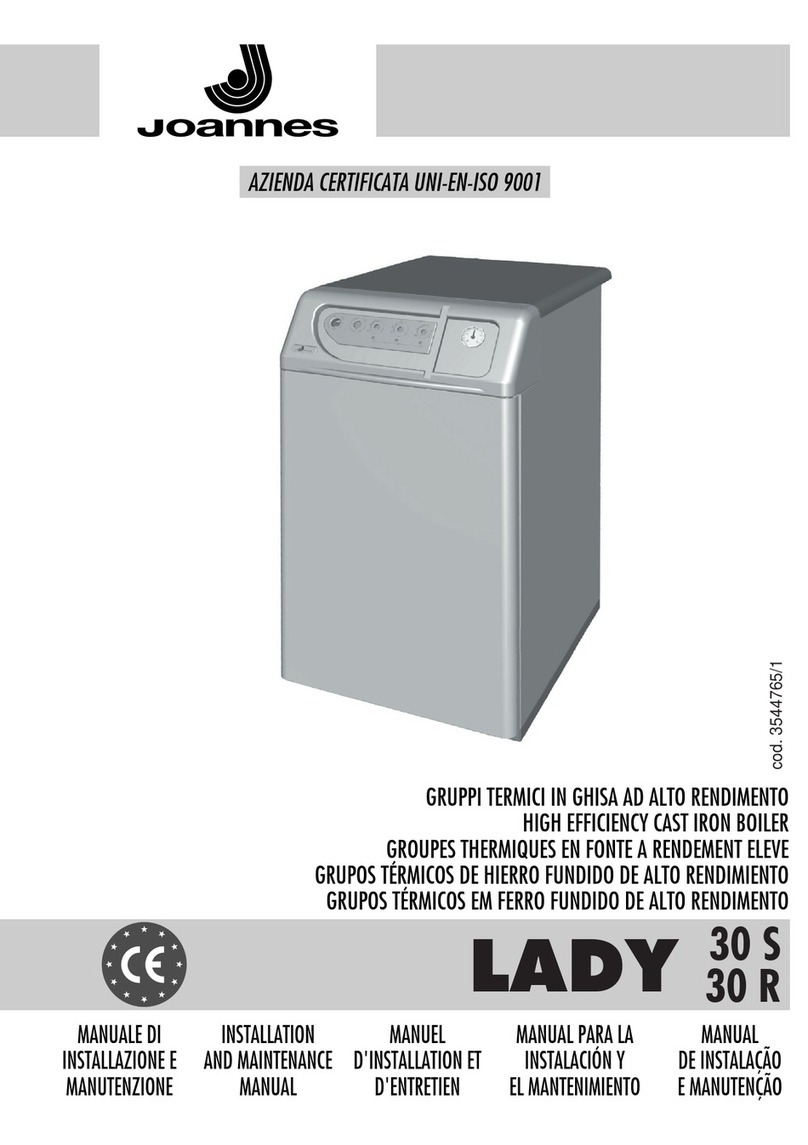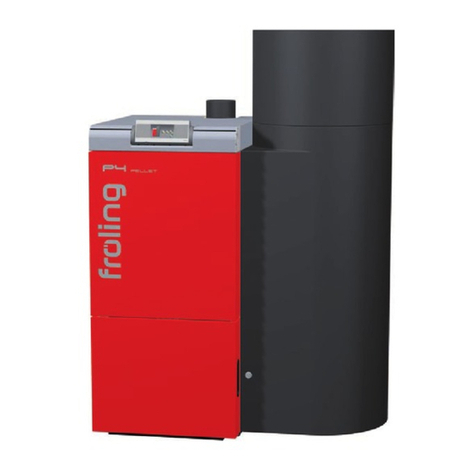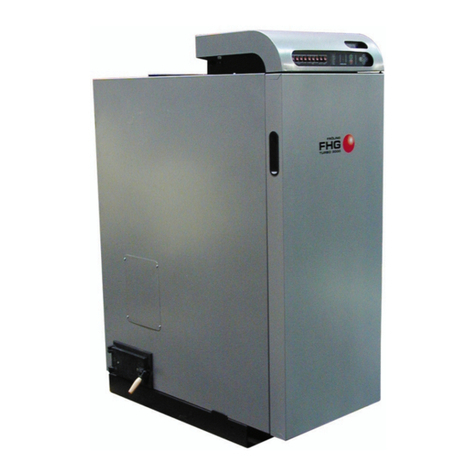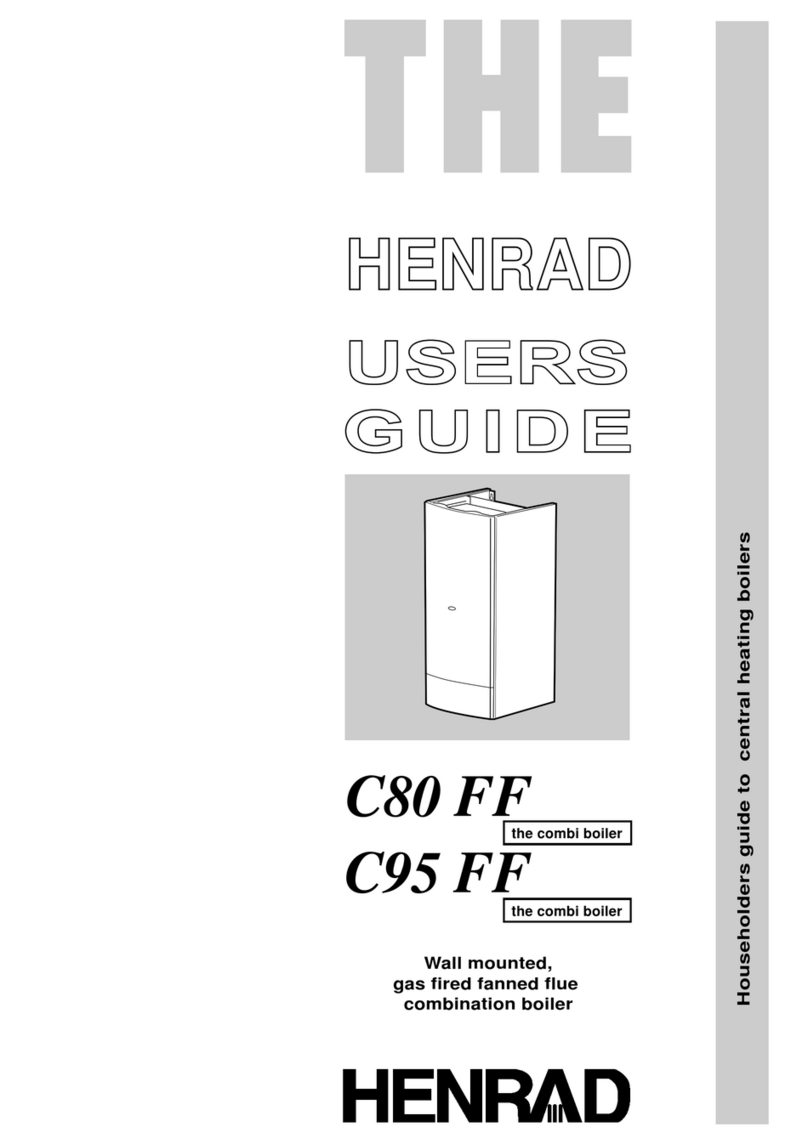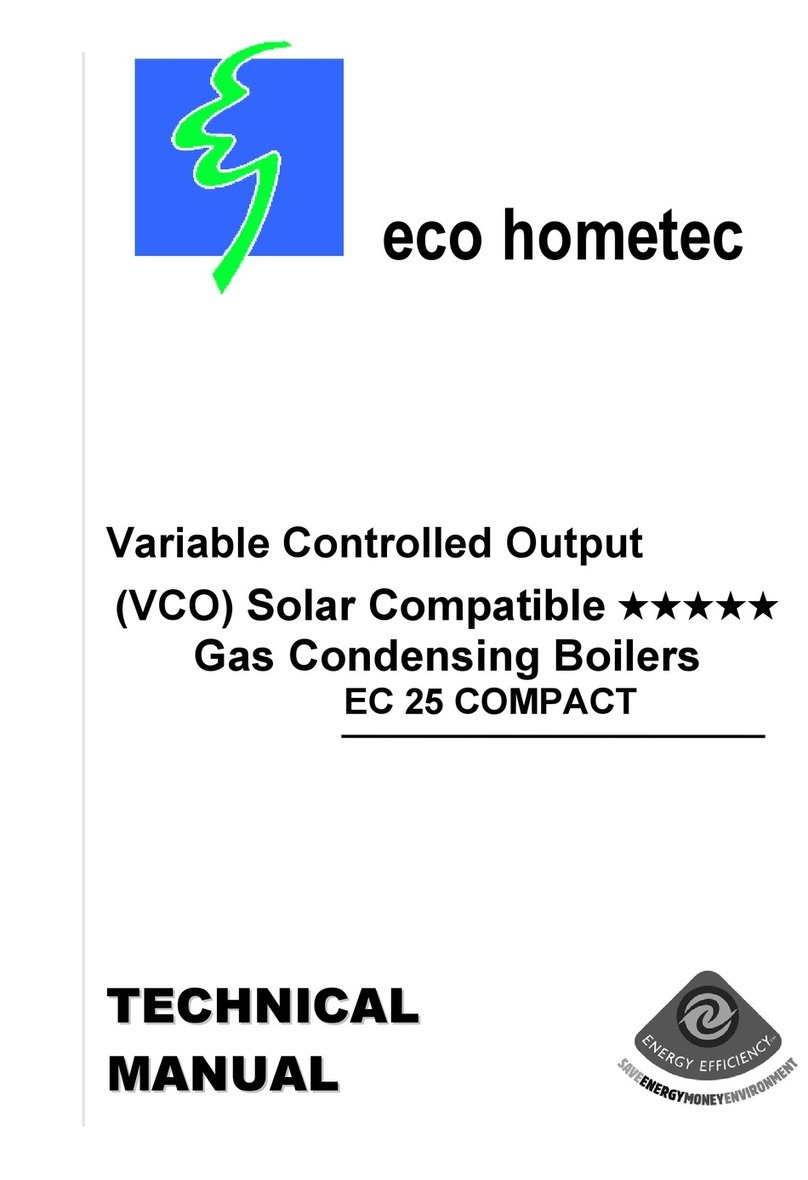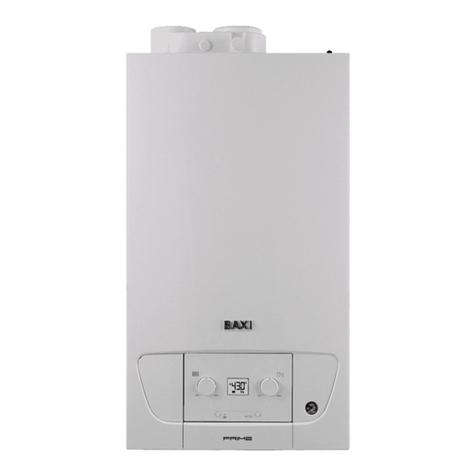Hercules Boiler Model 3
INSTALLATION OF STOVE
These instructions cover the basic principles to ensure the satisfactory installation of
the stove, although detail may need slight modification to suit particular local site
conditions. In all cases the installation must comply with current Building
Regulations, Local Authority Byelaws and other specifications or regulations as they
affect the installation of the stove.
It should be noted that the Building Regulations requirements may be met by
adopting the relevant recommendations given in British Standards BS 8303, BS 6461
and BS 7566 as an alternative means to achieve an equivalent level of performance
to that obtained following the guidance given in Approved Document J.
We recommend that you seek the services of an installer who is conversant with
stove installations and Building Regulations. It is most likely that the shop where
you purchased the stove will be able to help in this respect. It is our general policy to
supply specialist Fireplace shops. These shops can offer an after sales service and
will be able to offer advice when necessary.
Please note that it is a legal requirement to comply with Building
Regulations and that the installation of the stove is certified by Local
Authority Building Control. It is the responsibility of the appliance owner
to notify Building control for certification. It is also a requirement under
the guarantee that all installations and operation complies to the
instructions to follow. No installation should be undertaken unless the
installer is suitably qualified.
Stove Performance
The Hercules stove range has been CE approved as an intermittent operating
appliance for burning manufactured or naturally occurring smokeless fuels and wood
logs only. It should be noted that it is an offence to burn wood logs in this stove if it
is installed within a Smoke Control Area in the UK.
12B 20B 30B
Maximum heat output to room (kW) 4 6 8
Maximum heat output to water (kW) 8 14 22
Flue diameter MINIMUM* 7 inch
*please note a larger flue diameter may be required if the flue design demands it.
Efficiency % 73 75.4 75.4
Temperature exhaust gas – wood (ºC) 190
Optimal working temperature 70º - 75º
Boiler capacity (litres) 18 20 22
Flow & return pipe fitting (female) 1 ½ BSP 1 ½ BSP 1 ½ BSP
Flue draft Pressure 0.17 – 2 0.17 – 2 0.17 – 2
(tested when hot) WOOD (mbar/Pa) 17 – 2.0 17 – 2.0 17 – 2.0
Maximum working temperature 94º - 95º
Stove depth (mm) 440 510 620
Stove Height (mm) 768 768 768
Stove Width (mm) 747 747 747
Stove Weight (Kg) 201 225 252
